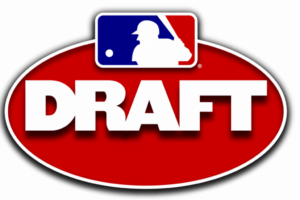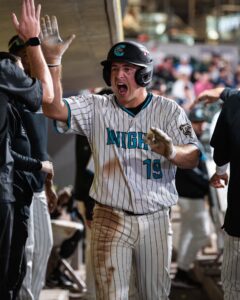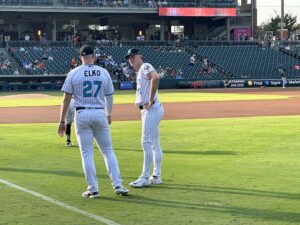Desert Oasis: Putting the young performers in the Arizona League in context
Those that have the tolerance for following the lower levels of the White Sox minor leagues may have noticed the short season affiliates (Great Falls Voyagers and AZL White Sox) for the White Sox have had some noticeable, and welcome differences from years past:
Gone are the days of the White Sox stocking these teams with older talent after overwhelmingly college-leaning drafts. Players like 2019 16th rounder D.J. Gladney are not just holding their head above water, but excelling with the bat in their first taste of pro ball.
Yet the biggest surprise has not been from the recent high school draft picks, but from international signees such as Bryan Ramos, Jose Rodriguez, Luis Mieses and Anderson Comas.
When the White Sox exceeded their budget and signed Luis Robert late into the 2016 draft class, they added a star prospect but did restrict their next two international draft periods. They were allowed only signings of $300,000 or less.
When the signing periods opened on July 2 each year, the White Sox only reported a handful of signings and barely were mentioned by prominent reporters such as Baseball America’s Ben Badler or MLB.com’s Jesse Sanchez. At the time it seemed more likely that the several trades that Hahn made sending out budget allocation for players such as Ryan Burr and Yeyson Yrizarri would be the only real production we would get from those periods.
But White Sox Director of International Scouting Marco Paddy didn’t take this time off:
- Jose Rodriguez was added in February 2018 (during the 2017 signing period) and started off in the DSL roaring hot before cooling down.
- Bryan Ramos was signed out of Cuba for the 2018 signing period for 300k along side fellow Cuban Harold Diaz.
All are 18 or younger and have opened eyes with their opening performance to date. But how do these performances stack up to previous Sox prospects’ first years, and what does it mean in terms of their outlook?
In this article, the focus is the group performing in the AZL. The goal is to understand how the White Sox young players’ performance to date stacks up not only to previous Sox prospects in the Arizona League, but where it ranked in the league as a whole. I’m looking back to 2016 – a year the White Sox had several top international signees arrive stateside. And finally, I am restricting this to only qualified batters. This removes Bryce Bush – whom I will still provide some context on how amazing he was.
Here are the White Sox players by year and their age:
2019 AZL Roster
Jose Rodriguez, 18
Samil Polanco, 19
Tyler Osik, 22
Bryan Ramos, 17
Jonathan Allen, 22
James Beard, 18
DJ Gladney, 18
Misael Gonzalez, 18
2018 AZL Roster
Anderson Comas, 18
Luis Mieses, 18
Cabera Weaver, 18
Camilo Quinteiro, 21
Harvin Mendoza, 19
2017 AZL Roster
Alex Destino, 21
Lenyn Sosa, 17
Laz Rivera, 22
Michael Hickman, 20
2016 AZL Roster
Jacob Cooper, 20
Amado Nunez, 18
Luis Curbelo, 18
Joel Booker, 22
Franklin Reyes, 18
Trevin Sonnier, 23
So while only using qualified players limits the list to a degree, we can see the trend to younger players in the last two years.
How They Have Fared
Next, we will use Fangraphs wRC+ (weighted runs created) metric to judge the performance of these prospects against their peers in the league, and within their age cohort.
2019 (to July 10, 2019)
| 2019 White Sox | Age | wRC+ | Rank | Rank 18- |
| Bryan Ramos | 17 | 164 | 14 | 4 |
| Jose Rodriguez | 18 | 151 | 24 | 7 |
| James Beard | 18 | 65 | 119 | 46 |
| DJ Gladney | 18 | 132 | 36 | 13 |
| Misael Gonzalez | 18 | 48 | 138 | 56 |
| Samil Polanco | 19 | 44 | 143 | 30 |
| Tyler Osik | 22 | 86 | 98 | 27 |
| Jonathan Allen | 22 | 55 | 131 | 35 |
Here, we can see how amazing Ramos has been. He is the youngest player on the team, yet ranks 14th in the entire league in wRC+. When comparing him strictly to players 18 and under, he is 4th. Jose Rodriguez has been similarly fantastic, and the best part is how much power he has shown.
It would be one thing if this was a product of a high average with singles eeking through bad defense, but the power has been there for both.
And speaking of power, DJ Gladney’s 5 home runs see him as the 13th best 18 and under player in the league, and 36th overall.
2018 / 2017 / 2016
| 2018 | Age | wRC+ | Rank | Rank 18- |
| Anderson Comas | 18 | 107 | 114 | 41 |
| Luis Mieses | 18 | 57 | 202 | 74 |
| Cabera Weaver | 18 | 112 | 103 | 36 |
| Lency Delgado | 18 | 79 | 174 | 38 |
| Harvin Mendoza | 19 | 125 | 72 | 11 |
| Camilo Quinteiro | 21 | 132 | 56 | 8 |
| 2017 | Age | wRC+ | Rank | Rank 18- |
| Lenyn Sosa | 17 | 92 | 47 | 16 |
| Michael Hickman | 20 | 108 | 29 | 7 |
| Alex Destino | 21 | 134 | 9 | 3 |
| Laz Rivera | 20 | 126 | 17 | 5 |
| 2016 | Age | wRC+ | Rank | Rank 18- |
| Amado Nunez | 18 | 98 | 43 | 18 |
| Luis Curbelo | 18 | 83 | 57 | 23 |
| Franklin Reyes | 18 | 25 | 65 | 28 |
| Jacob Cooper | 20 | 104 | 32 | 5 |
| Joel Booker | 22 | 127 | 11 | 2 |
| Trevor Sonnier | 23 | 89 | 51 | 4 |
Well, let’s start this off with the bad. No, that is not a typo – Franklin Reyes in his second year in the AZL had a 25 wRC+.
But there is also some good! Last year we see both Comas and Weaver finish above 100 wRC+. Sosa in 2017 also accomplished this feat, along with a very low K%.
All of those players are succeeding in their next stops (even with some struggles).
But, missing are the types of dominant league performances we are seeing from Ramos, Rodriguez and Gladney. Only our too-old-for-the-league prospects did that.
It’s here I will mention Bryce Bush, if I included his Arizona at 52 PAs from his time in AZL last year he would have ranked 1st in the entire league with his 221 wRC+. So 2018 deserves praise.
But what does this mean? Do we start penciling in these prospects into our 2025 lineups?
The reason to even bother analyzing their performance while hand waving those of the older prospects is largely because we have so much less information on them. For older college prospects we know their age, that they were seniors and thus much less likely to pan out, and scouting write-ups from the draft. So huge caveats apply, it is a small sample and it is a raw league.
For late round draft picks like Bryce Bush and Gladney, and then under the radar international signings like Rodriguez and Ramos, it is hard to know what to expect. At the very least, the longer they perform above average while being younger than the rest of the league, they can be assets to the White Sox rebuild through trade or otherwise.
However, I did take the opportunity to look through if there were any patterns to productivity in the AZL and sticking around.
For this, I used Fangraphs THE BOARD to get the most recent rankings and assignments for MiLB players in 2019. I then gave players points based on the level they are at.
- 1000 points for Majors
- 500 points for AAA
- 400 points for AA
- 300 points for A+
- 200 points for A
- 100 points for Rookie leagues
- 0 if out of the league
It is arbitrary, but it would hopefully detect some pattern between batting statistics and future status. I then ran these against the 2015 and 2016 classes. Out of the 271 players included in this set, 77% would be unassigned by 2019. So, I considered still being in the organization a win.
Just running simple correlations against the level assignments, I expected that I would see K% as one of the stronger indicators. Lenyn Sosa is one of my favorite prospects in part because I was so impressed how he rarely struck out as a 17-year-old.
But when I ran it for the entire set, it had no correlation. Production (wRC+) was also fairly modest. Controlling for just the younger set of 18 and under though told a more interesting story.
Higher ISO had a stronger correlation to assignment than low K%, with a modest .3 correlation. This is a big reason I’m paying attention to what Ramos, Rodriguez and Gladney are doing, even if they start to cool off: the power numbers they have banked are already impressive compared to years past. As expected, wRC+ had the strongest correlation to future assignment with a .4 correlation, but even that is not particularly strong, nor would we expect it to be at this level where there are so many hurdles to clear.
The reality is it is undoubtedly better to see these kids perform than not, but even great performance isn’t a sure sign of anything. They will have many more games to go, levels to adjust, and more to prove before we hear what we really crave — how the White Sox view them as prospects.
For now, we can dream we have several diamonds in the rough.






